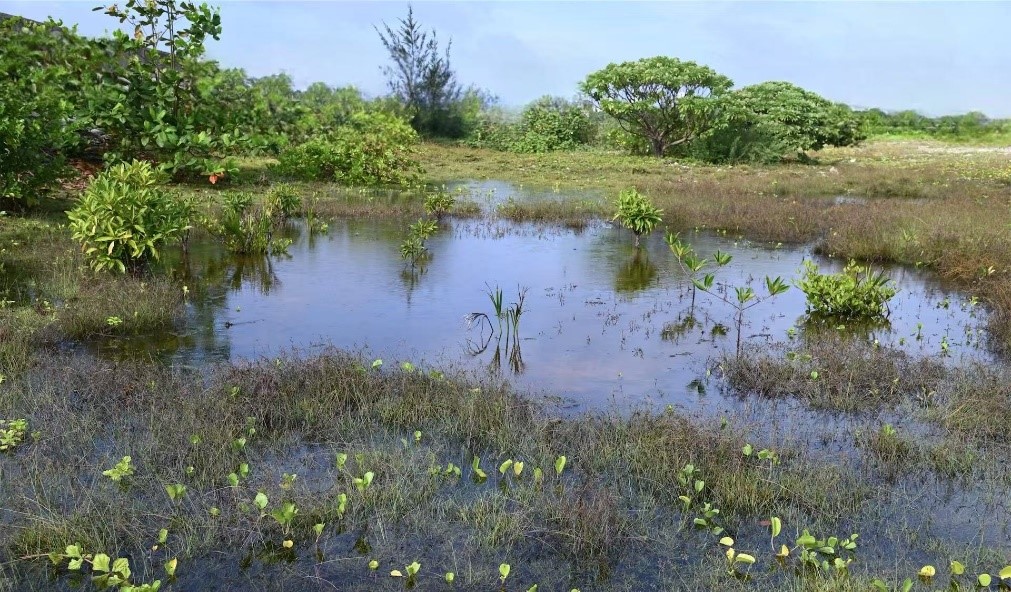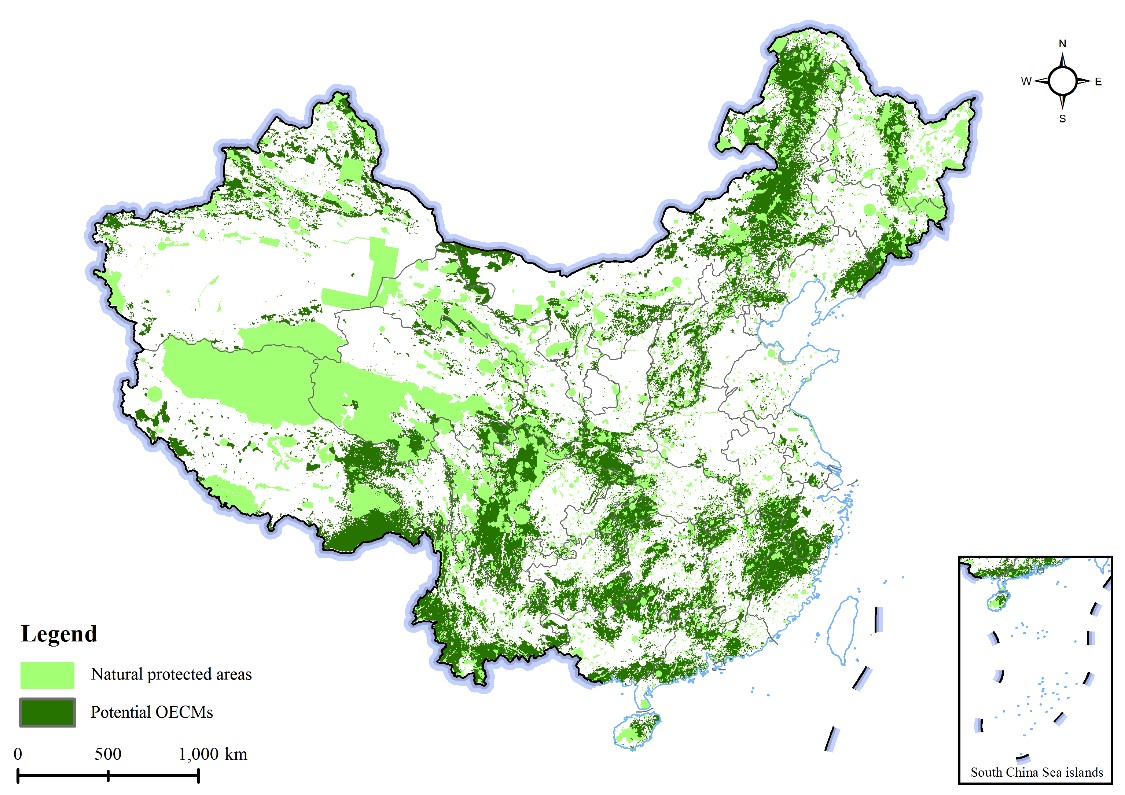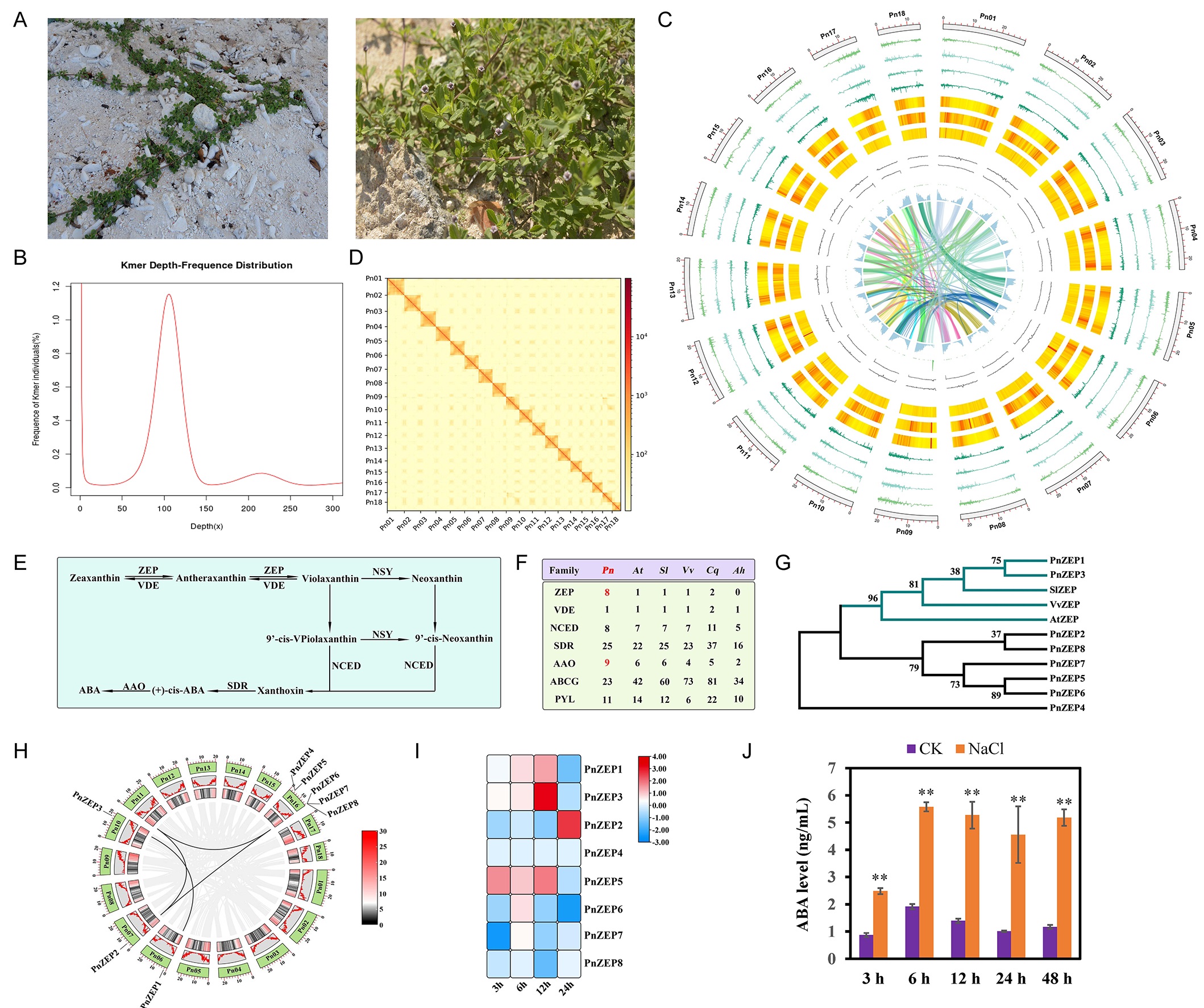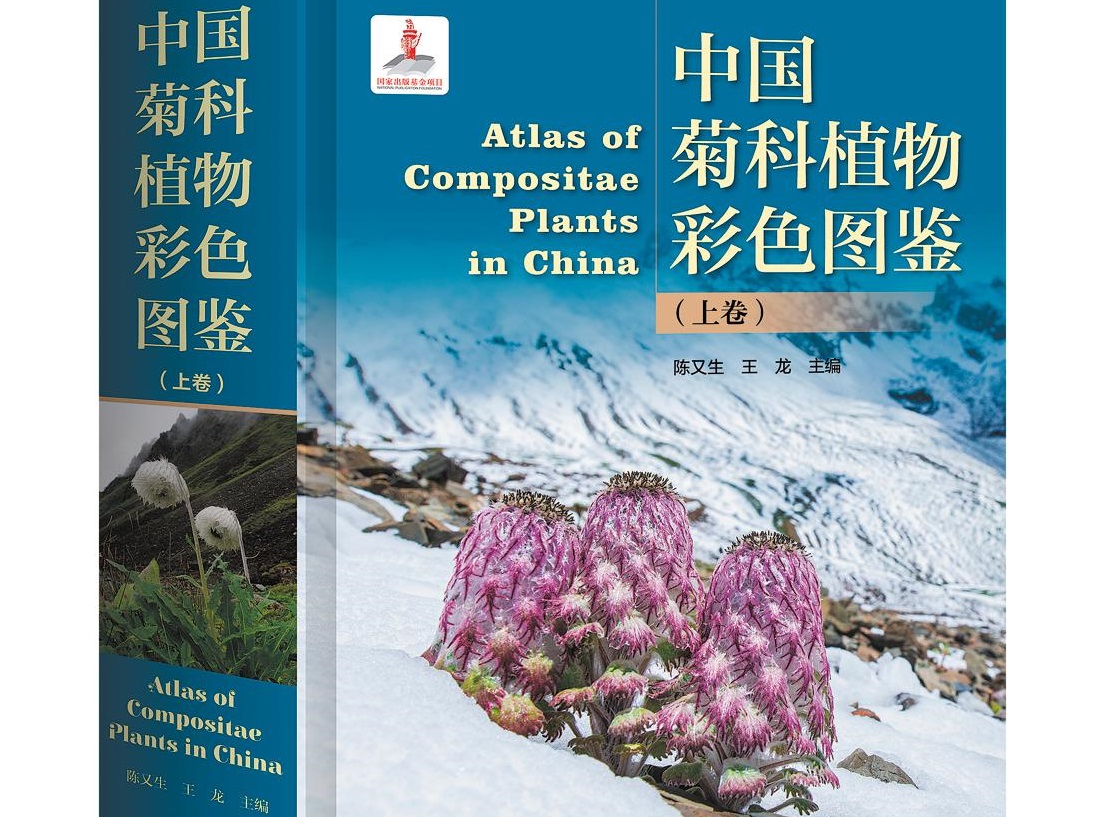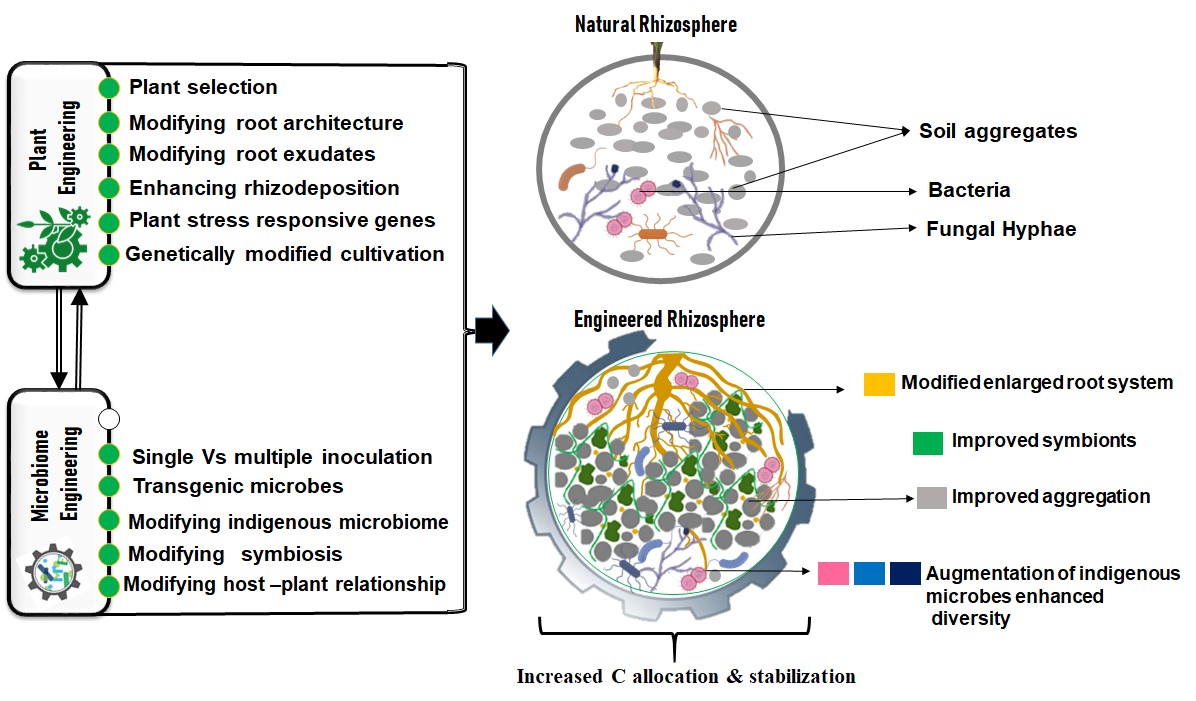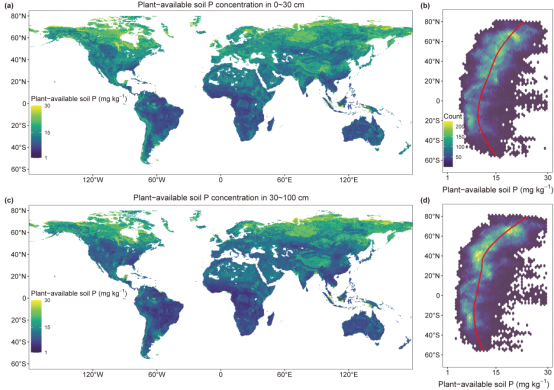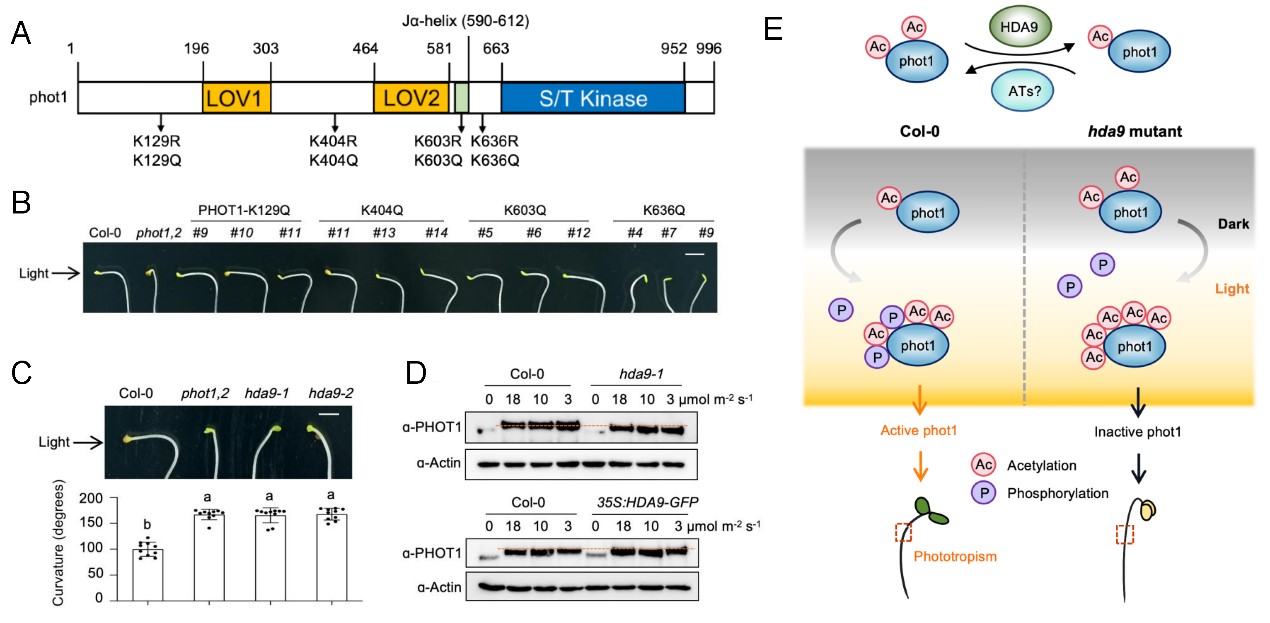News
-
2025-08-02Response of primary saltmarsh succession on a tropical coral island in the South China Sea to human disturbanceThe reclamation project and biological diffusion together facilitated the early establishment of pioneer grasses, initiating primary saltmarsh succession. The accelerated transition to shrub-dominated communities was likely driven by dike construction and the introduction of stress-tolerant shrub species. In 2023, the research team from South China Botanical Garden, Chinese Academy of Sciences discovered a near-natural saltmarsh ecosystem on a tropical coral island region undergoing reclamation in the South China Sea (Figure 1). The related domestic journals reported this finding, stating that it marks a significant transition from artificial int...Read More
-
2025-07-22Proposes Plan to Protect 30% of China’s Land in Line with International ConventionThe Kunming–Montreal Global Biodiversity Framework aims to conserve 30% of land globally by 2030 using protected areas (PAs) and ‘other effective area-based conservation measures’ (OECMs). China plans to expand PAs to 18% of the land area. An additional 12% can be designated as OECMs within the ecological protection red lines. Biodiversity loss is a severe global issue. To mitigate and ultimately reverse this trend, the 15th meeting of the Conference of the Parties to the United Nations Convention on Biological Diversity adopted the Kunming-Montreal Global Biodiversity Framework. Its Target 3 is to protect at least 30% of the world’s land and ocean areas by 2030, als...Read More
-
2025-07-18Unveils Molecular Mechanism of Salt Tolerance in Tropical Island Plant Phyla nodifloraPhyla nodiflorapossesses natural resistance to multiple abiotic stresses, the mechanism underlyingits tolerance to environmental stresses, such as salinity, is almost entirely unknown. In present work, our genomic, transcriptomic and lysine acetylomic analyses provide profound insight into the molecular basis of the adaption of Phyla nodiflora t... Phyla nodiflora (L.) Greene, a perennial herbaceous vine belonging to the Verbenaceae family, is widely distributed in tropical and subtropical coastal regions. It is noted for its remarkable tolerance to salt and barren sandy soils. Additionally, Phyla nodiflora possesses strong covering ability, disease resistance, and adaptability, making it ...Read More
-
2025-07-18Recent progress in the polysaccharides-prenylated flavonoids nanocomplexesIn this study, three prenylated flavonoids – icaritin (ICT), icariin (ICA), and icariside I (ICS) – were encapsulated in chitosan (CS) using a pH-driven method. The influence of the structural characteristics of these prenylated flavonoids on their encapsulation efficiency and their interaction with CS was investigated. Polysaccharides are natural nano-carrier of prenylated flavonoids. Prenylated flavonoids are a unique group characterized by prenyl side chain on the flavonoid skeleton. The pentenylation can enhance the bioactivity and bioaccumulation of the parent flavonoids. The application of prenylated flavonoids as nutraceutical ingredients in functional f...Read More
-
2025-07-09Scientists Propose Rhizosphere Engineering as a Scalable Solution to Climate-Induced Agricultural ChallengesThis paper explores how rhizosphere engineering, both plant-based and microbe-based, can be leveraged to enhance crop productivity, manage pests and diseases, and remediate contaminated environments under shifting climate conditions. It highlights the importance and urgency of moving beyond conventional input-intensive farming toward biologicall... Soil health and climate resilience are at the heart of global agricultural sustainability efforts. A collaborative team from Nitrogen Biogeochemistry Lab, led by Prof. LU Xiankai at South China Botanical Garden, published a cutting-edge review proposing rhizosphere engineering as a transformative solution to the multifaceted challenges facing fo...Read More
-
2025-07-09Global distribution and influencing factors of plant-available phosphorus in (semi-)natural soilsDetermining plant-available phosphorus (P) concentration in soil is a prerequisite for identifying sites where P availability potentially limits plant growth and terrestrial carbon sequestration. However, global patterns and drivers of plant-available P in natural soils remain poorly understood. We constructed a global database of plant-availabl... Phosphorus (P) is frequently a limiting nutrient for plant production in terrestrial ecosystems. The soil is the primary source of P for plant growth, and plant-available soil P is the fraction of total soil P that is readily available to plants, especially plants without specialized carboxylate-releasing roots. Therefore, soil P availability af...Read More
-
2025-07-09Uncovers Molecular Mechanism of Acetylation in Regulating Plant PhototropismPhototropism is essential for optimizing plant growth and development, primarily mediated by the photoreceptor phototropin 1 (phot1). However, the molecular components linking light perception to phot1 activation remain poorly understood. Here, we identify a novel regulatory mechanism wherein HDA9-dependent deacetylation precisely modulates phot... Plant phototropism represents an essential adaptive mechanism that optimizes photosynthetic efficiency and developmental processes through directional growth responses to light. As the primary photoreceptor, phototropin 1 (phot1) mediates both blue light perception and subsequent phototropic responses in plants. While the molecular components ...Read More
